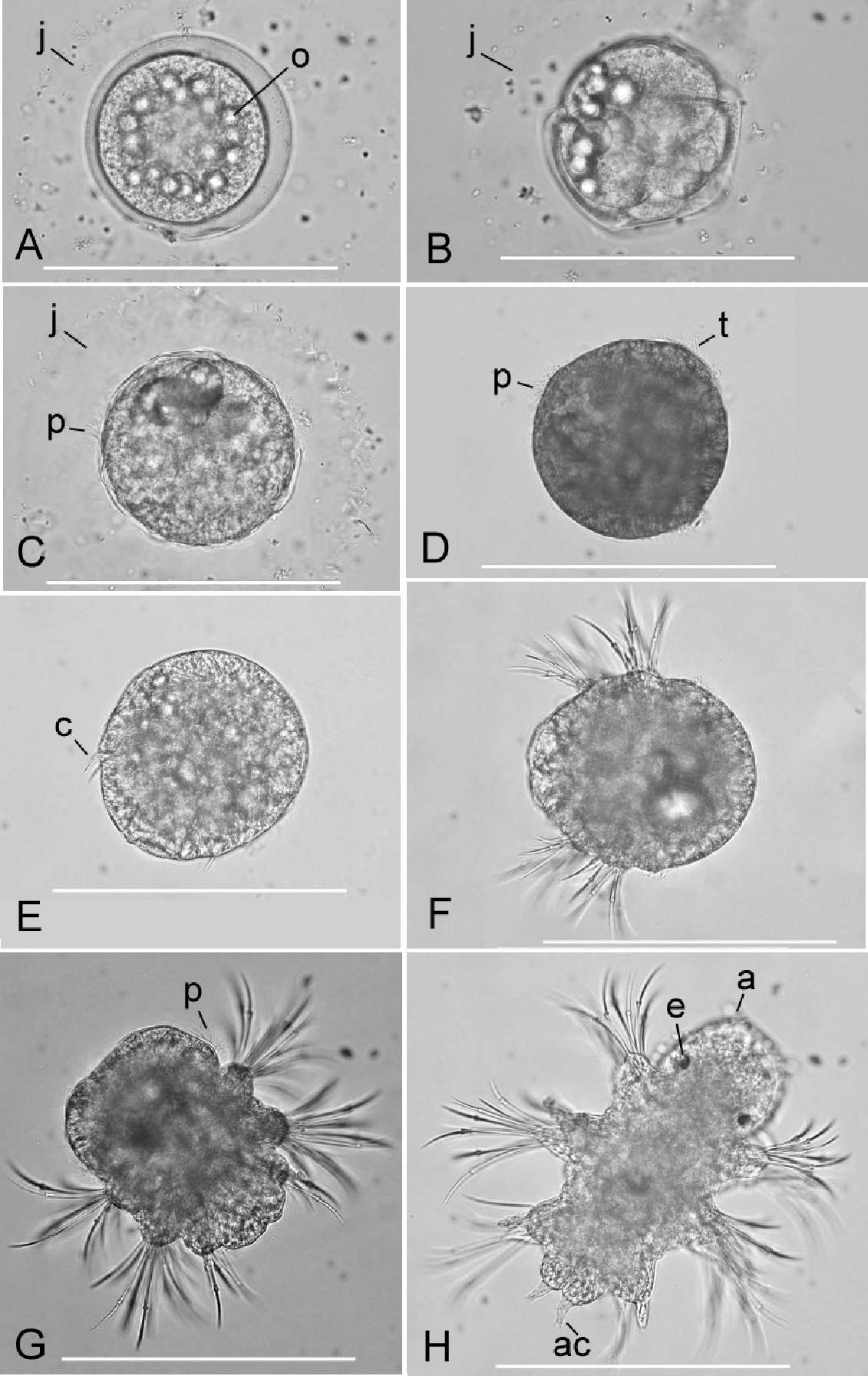
|
||
|
Early development of Neanthes glandicincta (Southern, 1921) after fertilisation in the laboratory. The material from the Lower Songkhla Lagoon, Thailand A fertilised egg surrounded by a jelly layer (j), 10 min after fertilisation; many sperm were trapped in the jelly layer; lipid (oil) drops (o) surrounded the germinal vesicle B 4-cell stage, 1 h and 10 min after fertilisation C early trochophore stage, 7 h and 30 min after fertilisation; ciliary movement of the prototroch (p) began within the jelly layer D free-swimming trochophore larva just after hatching out of the jelly layer, 8 h after fertilisation; ciliary bands of the prototroch and telotroch (t) were present E free-swimming early-metatrochophore larva, 20 h after fertilisation; two pairs of chaetal tufts (c) were present F free-swimming 2-chaetiger late-metatrochophore larva, 21 h after fertilisation; two pairs of chaetal tufts well developed G free-swimming early 3-chaetiger nectochaeta larva, 22 h after fertilisation; three pairs of chaetal tufts were developed; the prototroch and lipid drops remained in the anterior body H demersal late 3-chaetiger nectochaeta larva, 48 h after fertilisation; a pair of eyes (e), antennae (a), and anal cirri (ac) appeared. Lipid drops disappeared. Scale bars: 0.2 mm. |